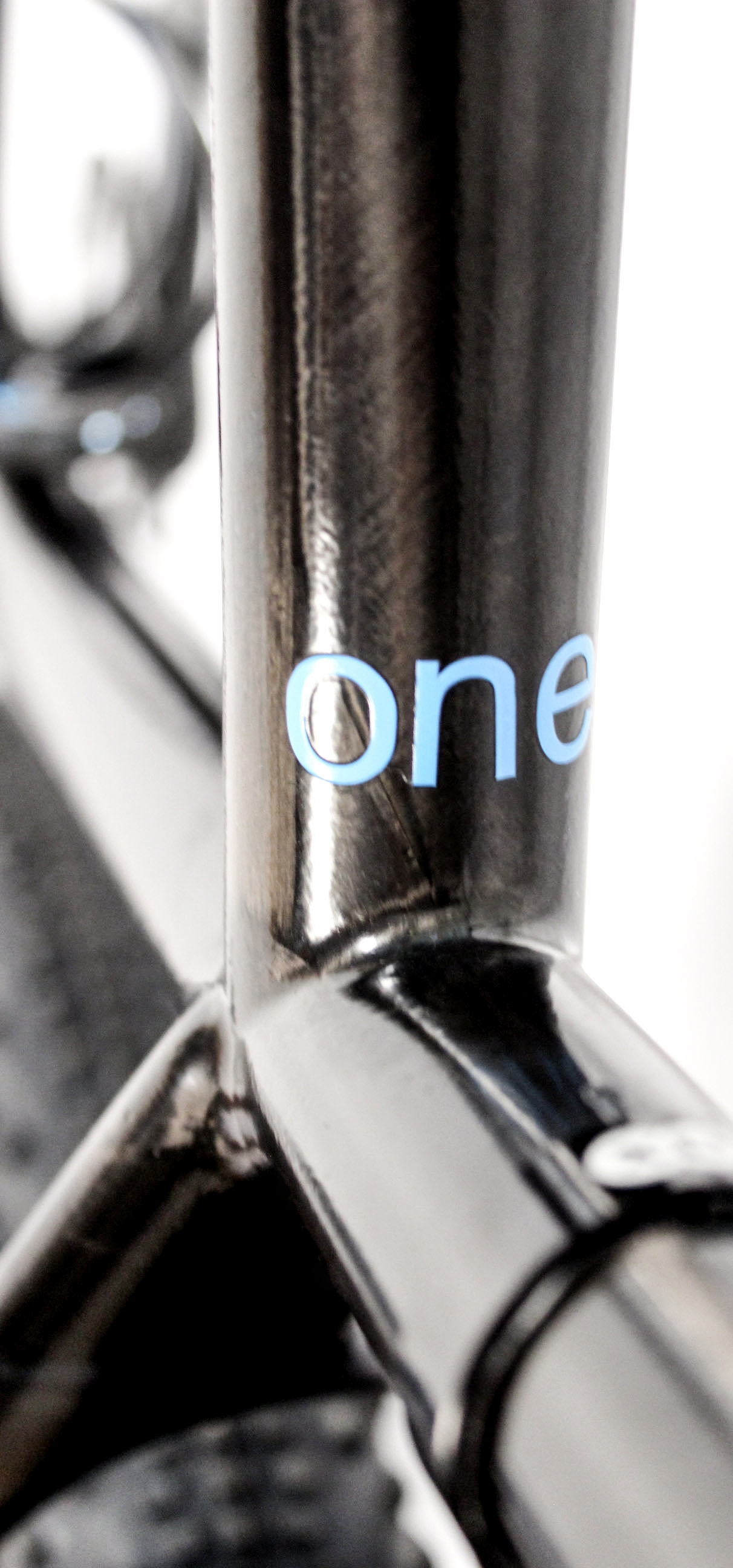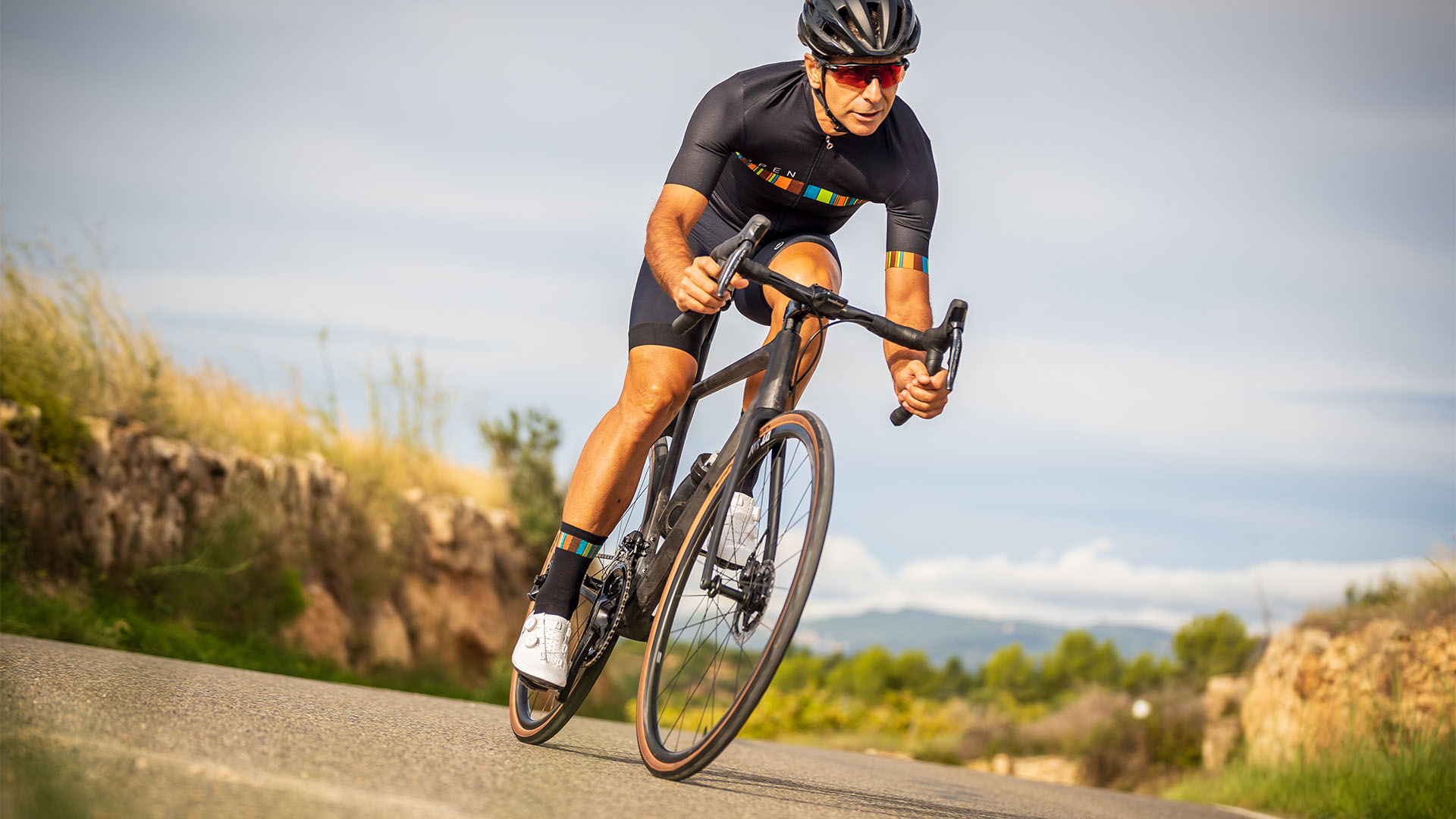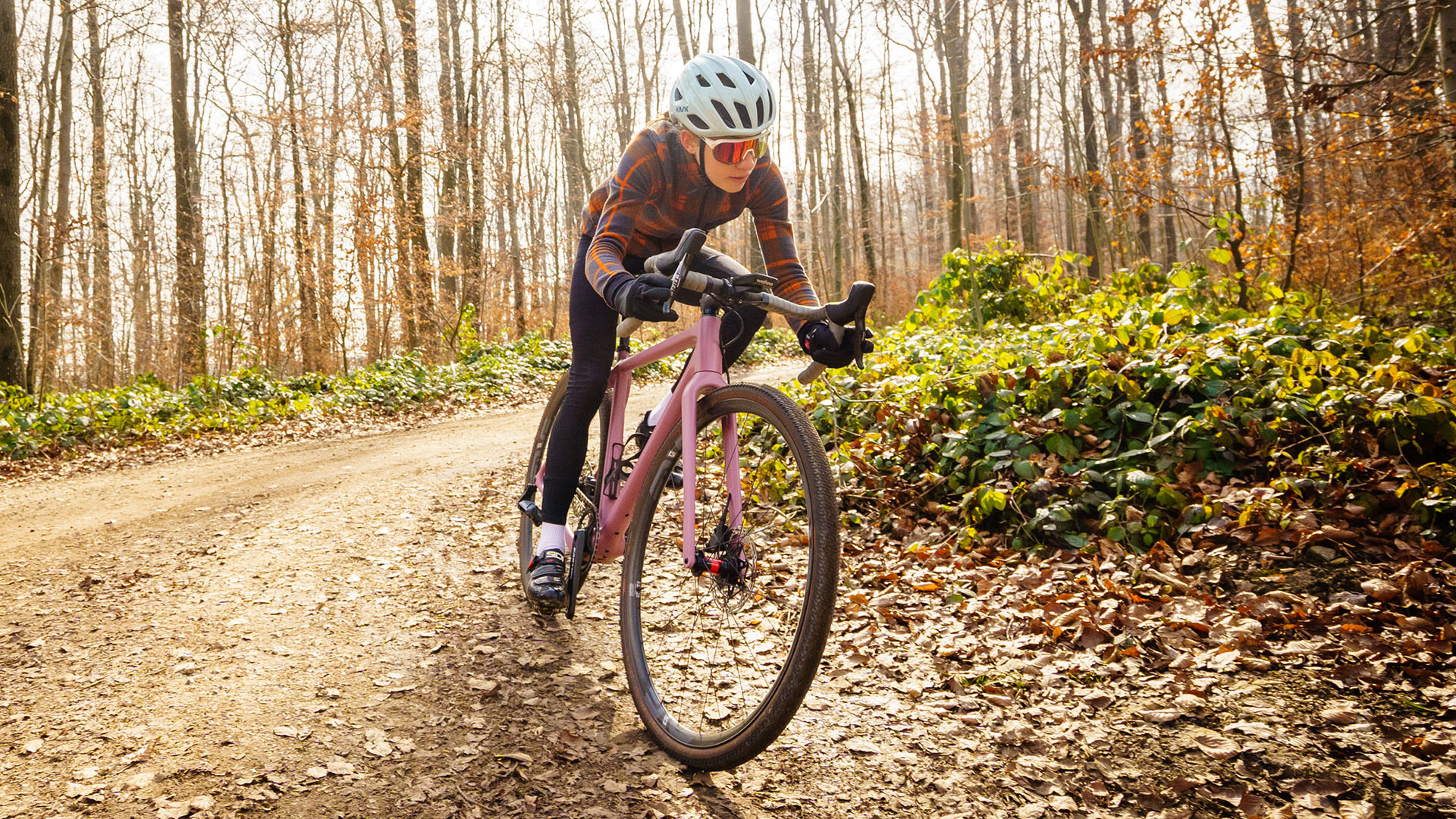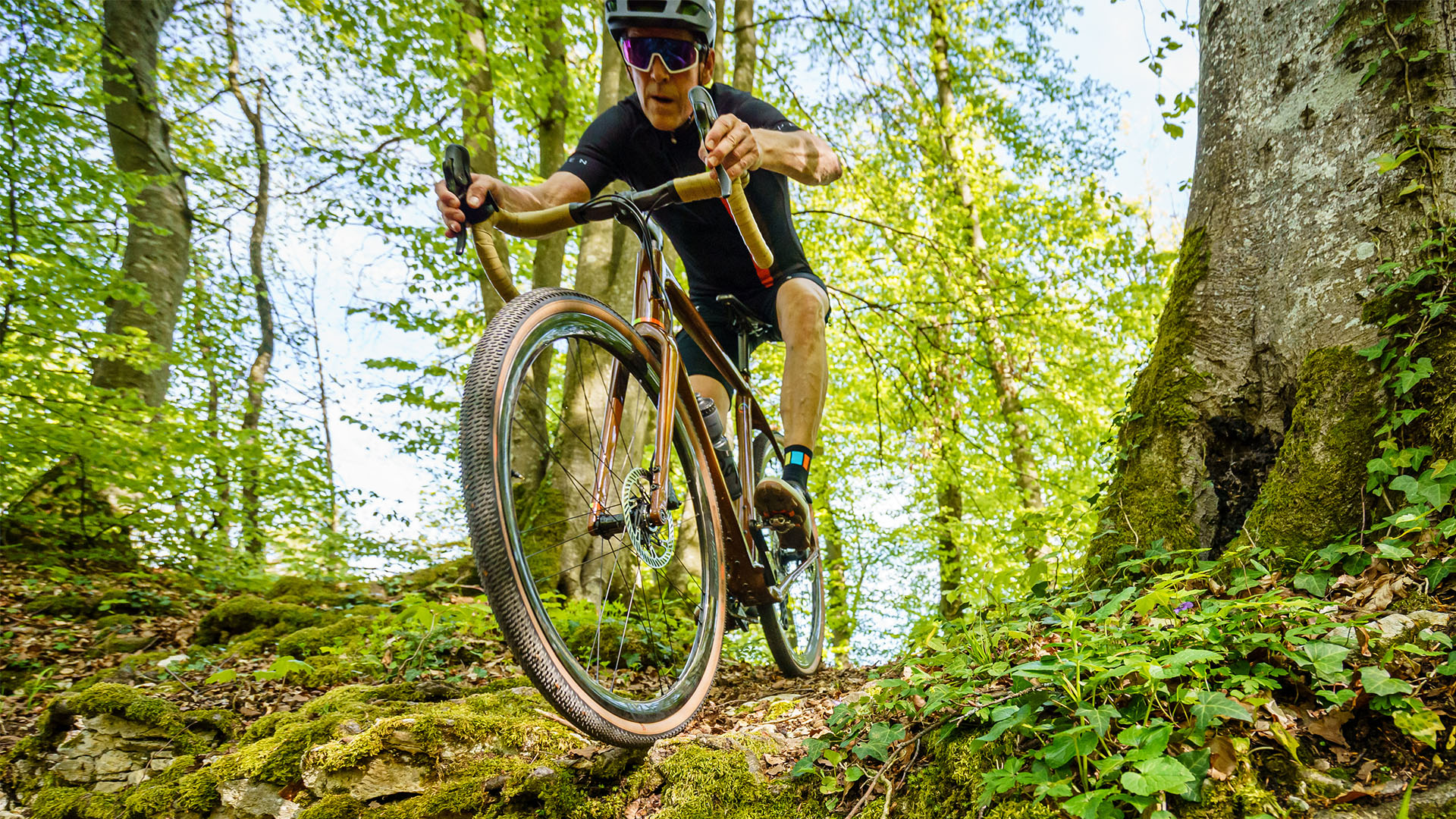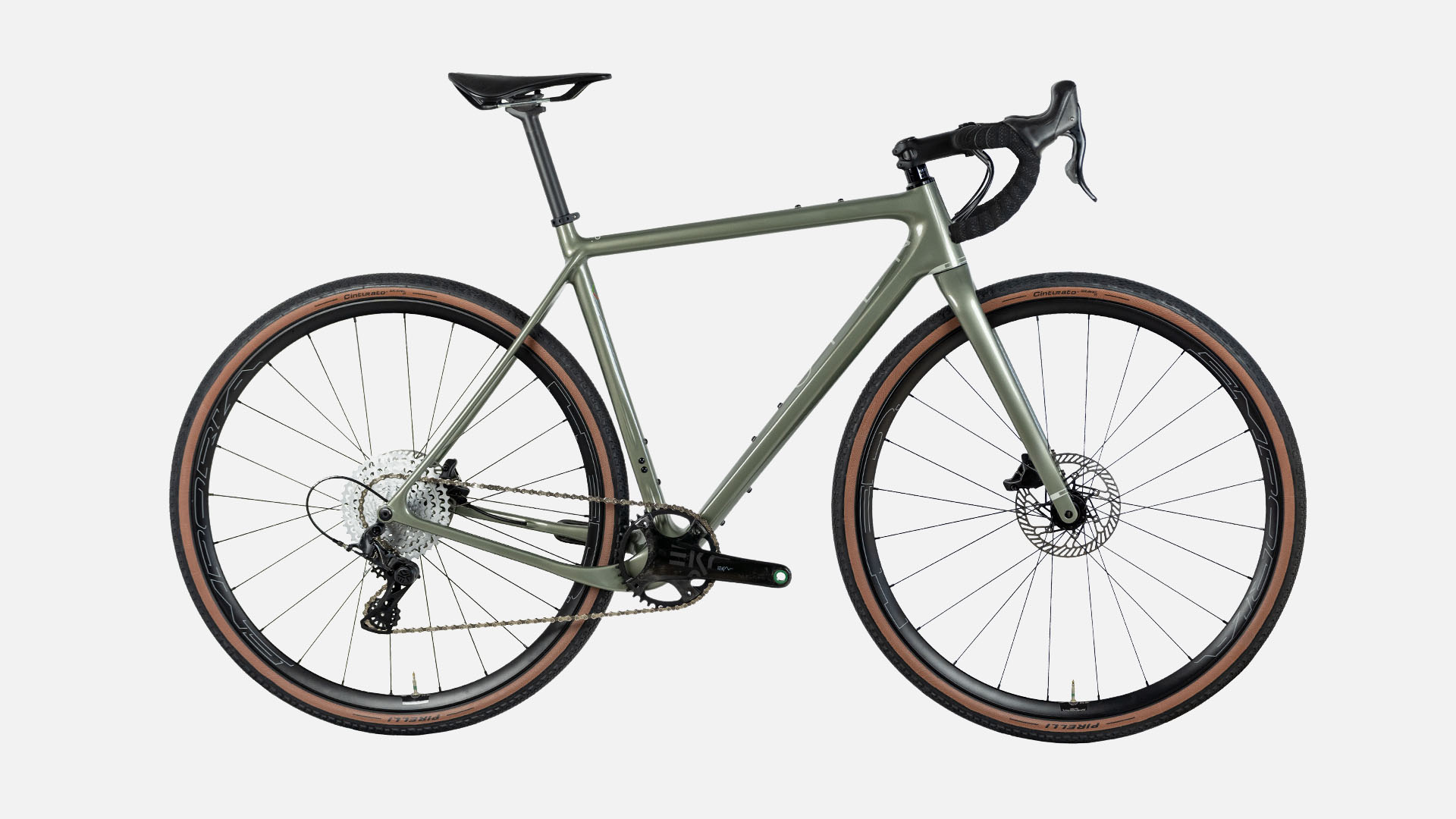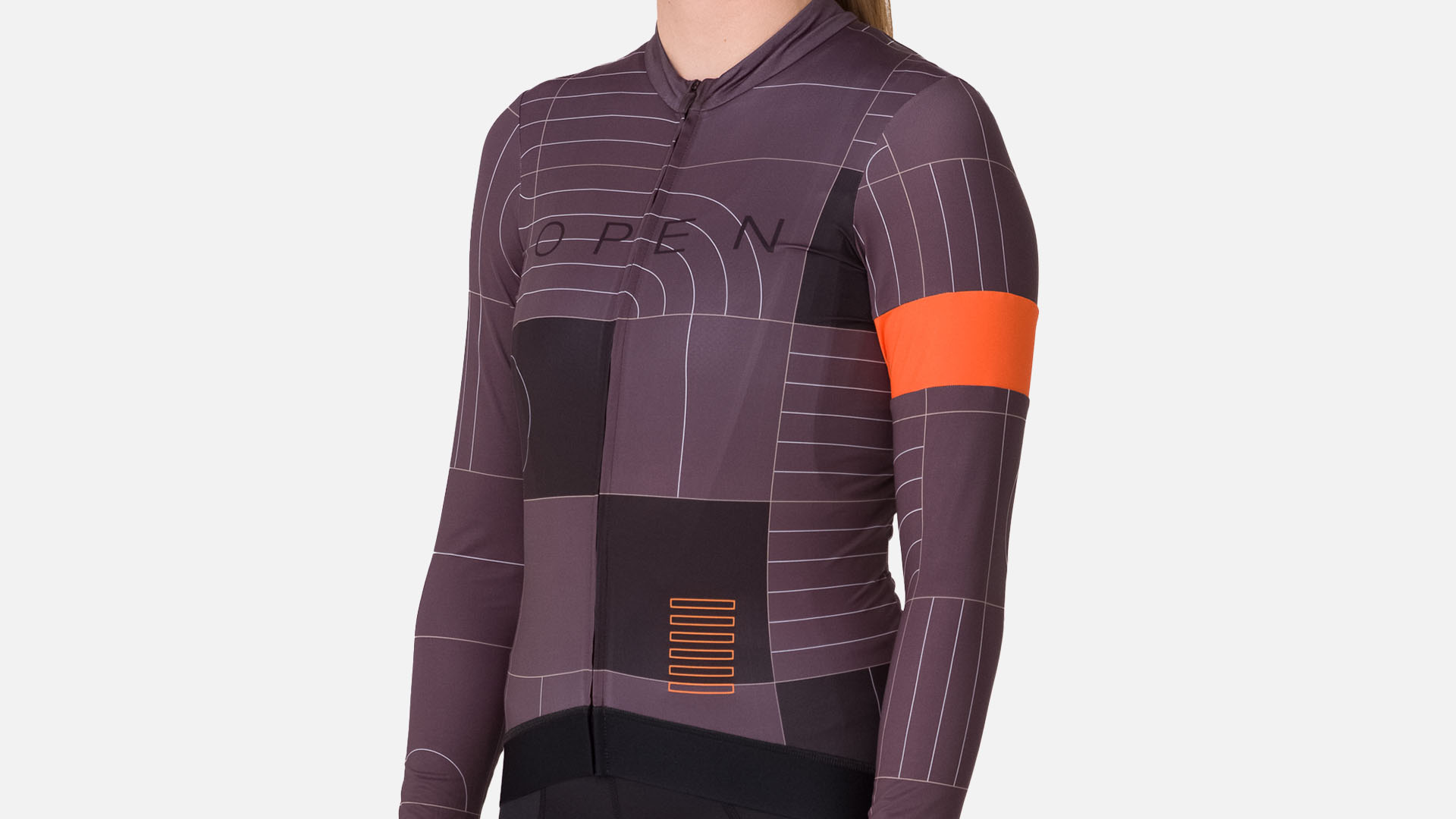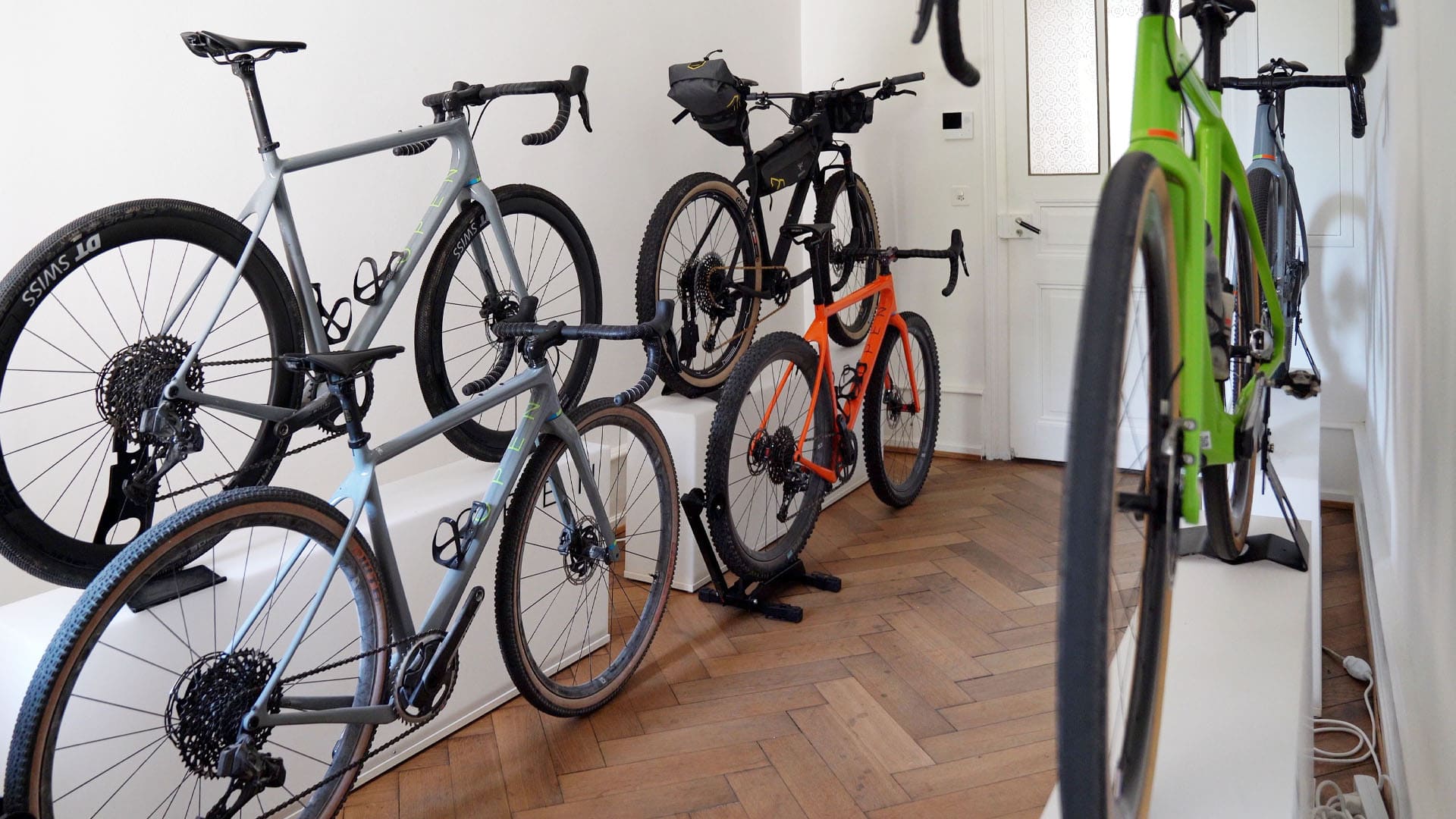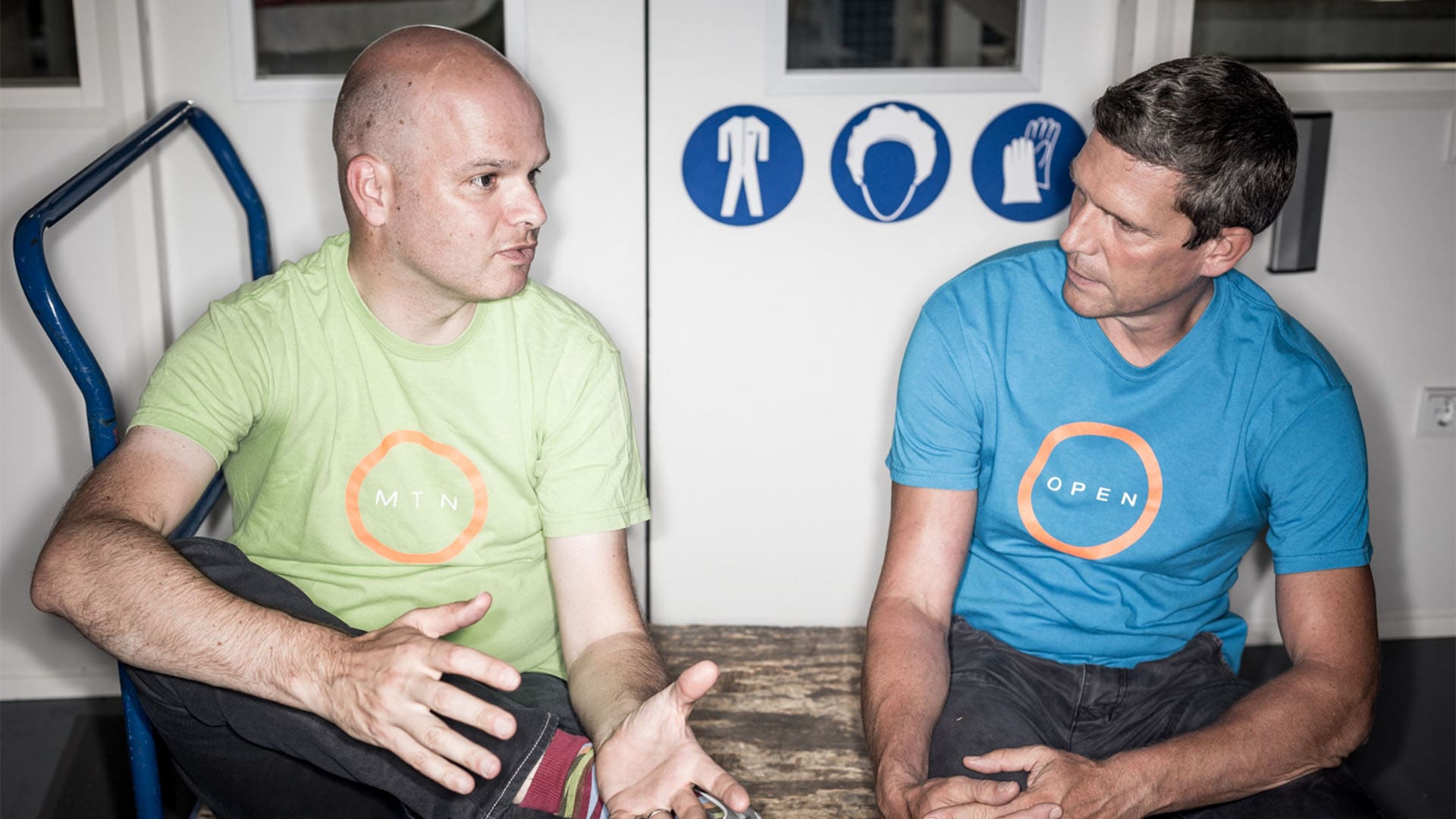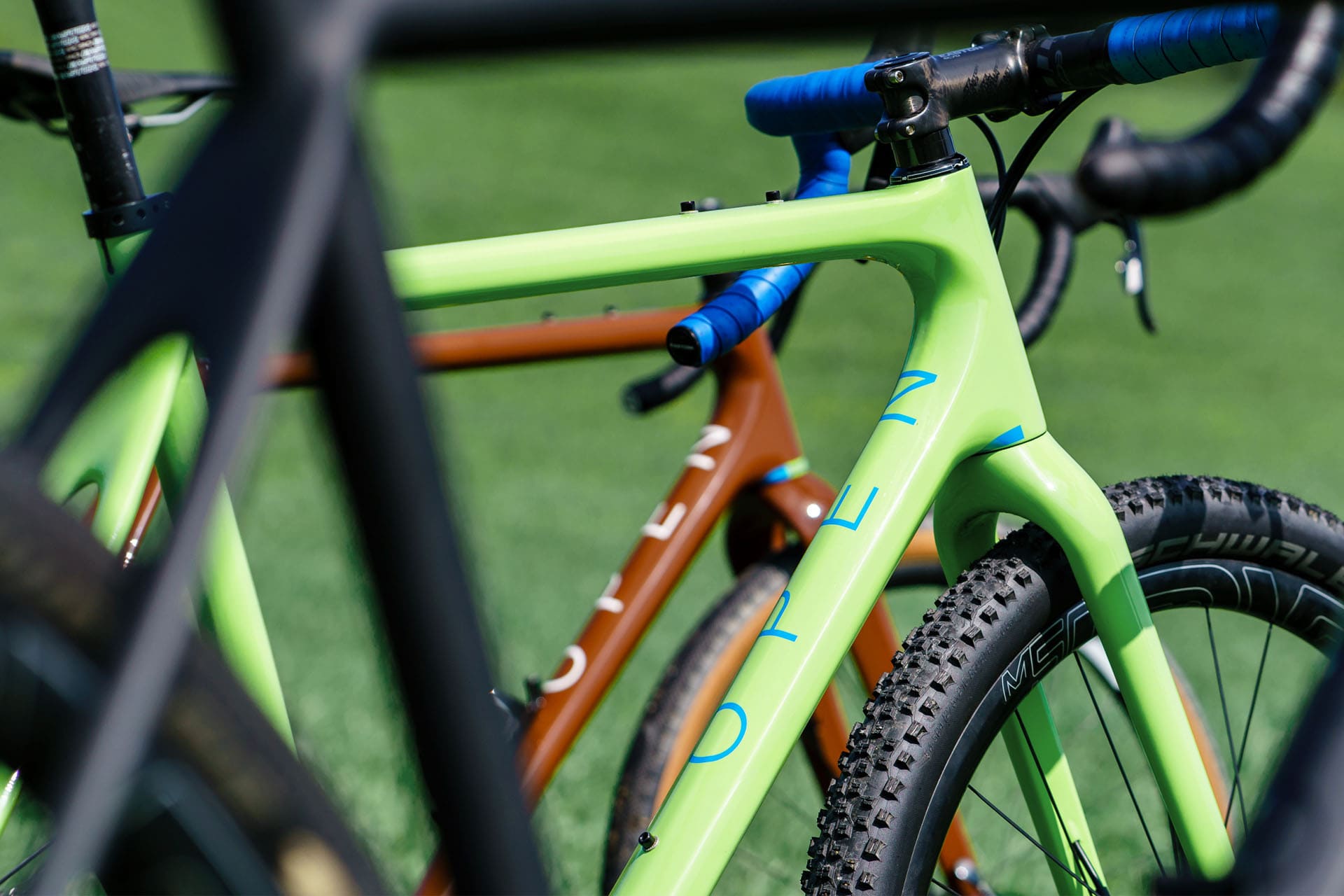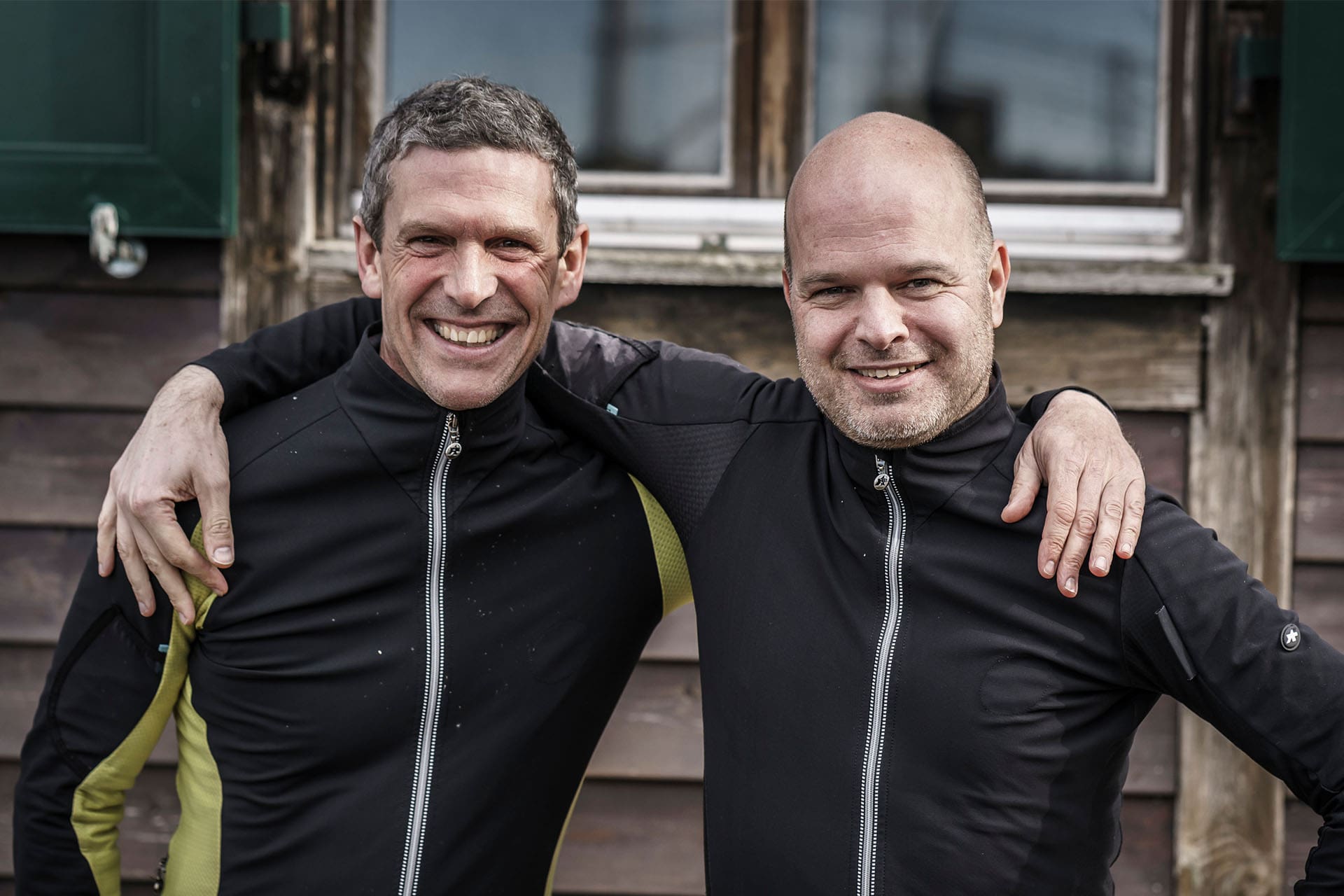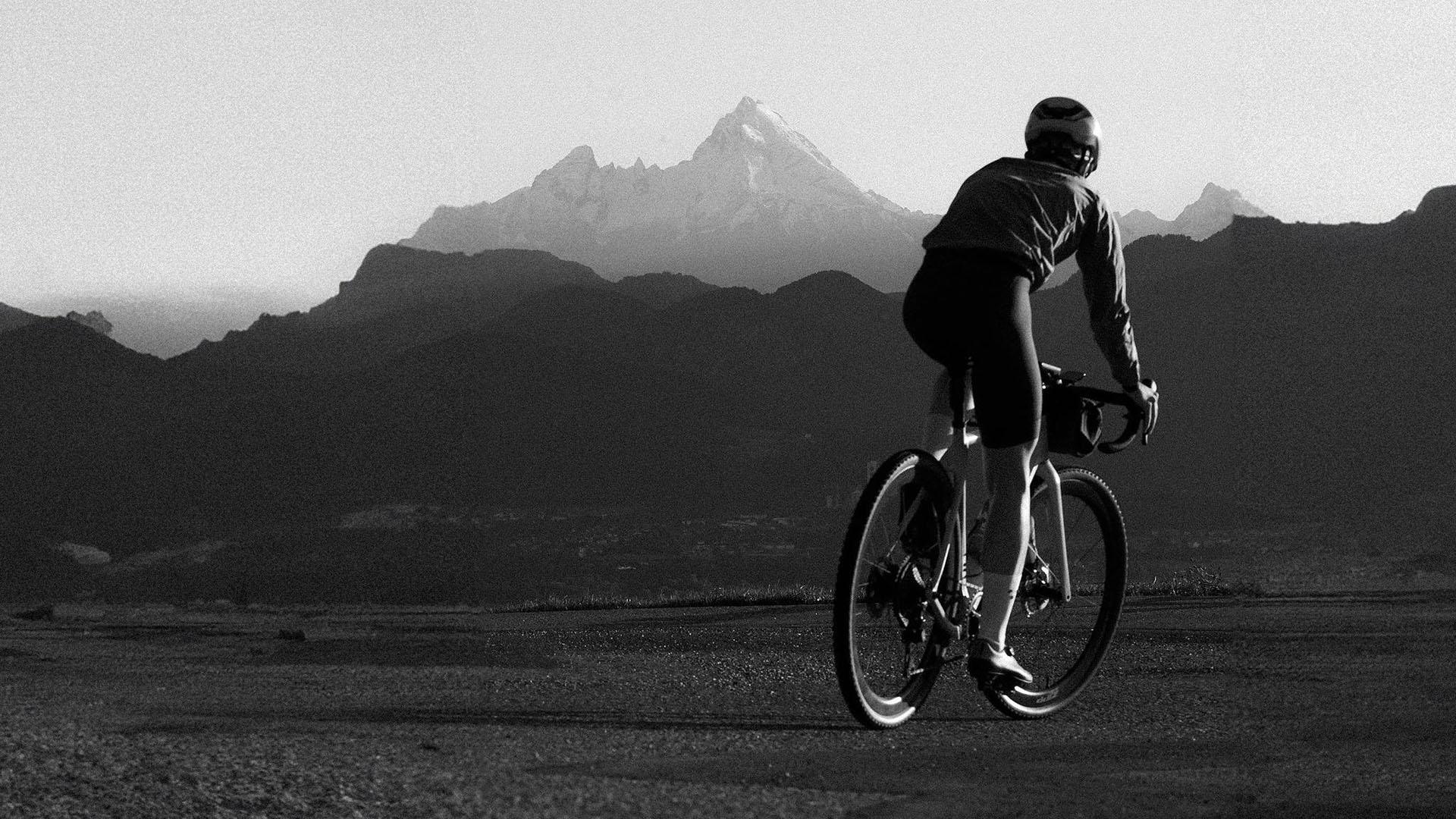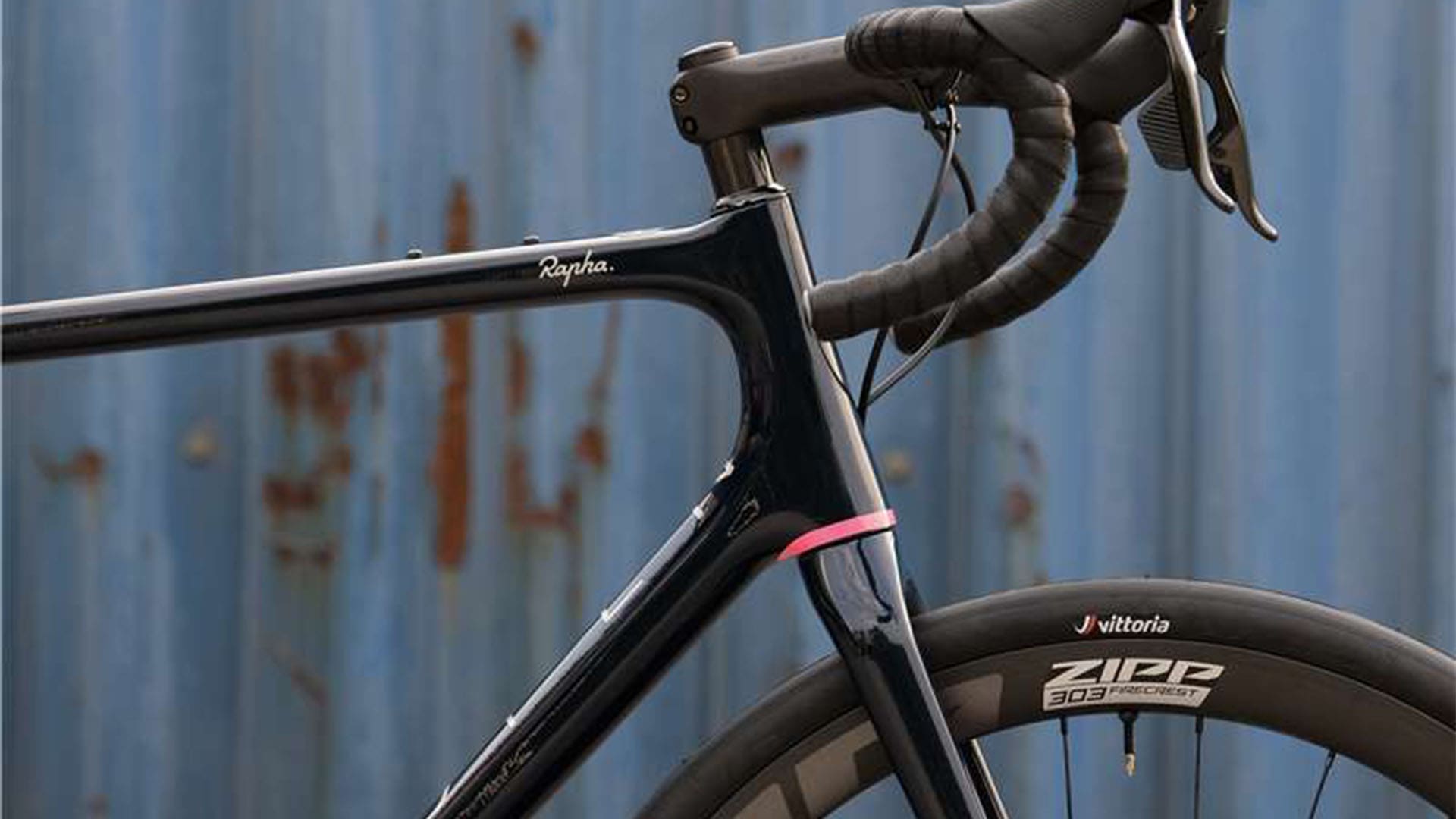The OPEN ONE
10. Apr ’14
General
The previous blog gave you a bit of background on why our next frame is built in Germany; this one will tell you more about that frame.

To let you know right off the bat, it's not our long-awaited full-suspension frame. While that project is coming along quite nicely, it is not ready yet. And we've always said our schedule won't be ruled by the calendar of trade shows and expos, we'll release products when they are ready. I would expect that to happen in a few short months.
Rather, the first frame we are building in Germany will be the O-1.0's crazy brother. Tweaked shapes, new production techniques, updated layup and a few neat little details. And of course the reason we are going through the trouble: higher stiffness, lower weight.

To start with the shapes, you will notice immediately the dropped chainstay on the driveside. More common in full suspension designs than in hardtails (though not unheard of), this feature solves the problem of how to snake the chainstay past the chainrings and tire. On the centerline between BB and rear hub, the tire and chainrings are closest together. As you move down, tire and rings curve away from each other, opening up more space for the chainstays. That allows us to make them wider and stiffer while using less material.

The rest of the chainstays are a bit flatter than before, which together with the curved seatstays improves the vertical compliance of the frame (already pretty darn good on the O-1.0).
The BB itself is BB30, with the shell extending to the back and being fully encapsulated by the chainstay "bridge". This construction caps the chainstays, which makes them much more torsionally stiff. It also means we can move away from BBright without giving up any stiffness and giving you more options for cranks.

The seattube is a bit slimmer to reduce weight but with side ribs to make the carbon surface more resistent to buckling and "breathing" (which is when a flattish surface becomes unstable and ruins the stiffness). Think of this as a sheet of paper; when it is flat it is not very stiff. When you roll it up into a tube, it becomes stiffer. When you add ribs, it will be stiffer still.
On the other end of the chainstays, we now use a thru-axle. The new design of the derailleur hanger (which uses the same thread for the thru-axle and for the cap that secures it to the frame) and the layup takes full advantage of the thru-axle. This has allowed us to make the design just as light as QR dropouts, but obviously with the stiffness benefits that the thru-axle brings. I'll post some more photos and info on this design tomorrow.

The front derailleur hanger is for Direct High Mount derailleurs, and it is removable in case you run an XX1 set-up. Toptube, downtube and headtube shapes have not changed much, since there was little there to improve upon. Access to German prepreg materials has changed the layup of those tubes, as you can clearly see since we leave all the fibers exposed.

You can see the strips of high-modulus uni-directional carbon along the sides, not only on our trademark flat sides of the downtube but also wrapping past those flat sides. Same as with the ribs, wrapping these strips around the edges of the flat sides means these plies are no longer flat but have a shallow U shape. That once again adds more stiffness.

You'll note I used the words "high modulus" in the previous paragraph and not "100% super-duper ultra-high modulus space technology certified organic carbon". As always, we use the highest modulus possible, but only there where it is needed and where it doesn't hurt the other properties of the frame. Because to put it simply, the higher the stiffness, the lower the strength.
Since you want a strong frame, you should use the very high modulus material only sparingly. By the way, the cost of the material is not only in the modulus either. Materials with a lower modulus but great strength that are pre-pregged with special resins by companies that specialize in this can be very expensive as well. But with better pre-pregging, you can more performance out of a material even if the carbon officially has the same grade. So it's worth the expense.
Or to put it another way, when you see yet another company promising some over-the-top modulus, ask them: If your material is so much better than what the rest of the industry uses, how come your frame is heavier? Their engineers must be really lousy if they can't make the world's best frame out of the world's best material? Or maybe, just maybe, there is no wonder material in that frame.
As before, we design the frame to be stiff but also strong (the O-1.0, though 2 years in production now, is still by far the lightest mountain bike frame to pass the EFBe test). And in the end, the weight comes out, it is not a target in itself.
So what is that weight in the end? Because we're still in the process of fine-tuning the layup, all we will say now is "below 850 grams". As you can see from the photo, the current frame is 796 grams for a size Large.

Speaking of sizes, we have made a few tweaks to our fit geometry, but I'll go over that in some more detail in a future post. Nothing major, so no worries if you already own an OPEN and like the geometry.
Unchanged is the steering geometry, we still aim to have a 29er be as agile as the smaller wheelsizes, and your feedback on the current handling has always been very positive. Of course it's not for everyone, but if you like the direct, agile approach, there is nothing like our steering geometry to deliver that. If you prefer the slower turning geometry, there are plenty of other frames that offer this.
Leaves me to talk about that last little issue, the price. We wanted this frame to be a technology demonstrator of what was possible, so we didn't skimp on anything; not on materials, not on shapes (these shapes are not ideal for production, to put it mildly), and of course not on the production facility.
That may not seem to be in line with my desire to make affordable frames in Germany, but first we wanted to build this frame, and then we are going to work on how we can improve the process to get the price down. In short, this frame shows what German production is capable of technically, the next project will show how those skills can be used to make a frame that is still better than anything out there but also more affordable.
As I mentioned before, that will be a long process and in the meantime we get to ride the best frame we know how to make. So in a sense, this is a bit of a selfish frame. Then again, all we do at OPEN is build bikes we want to ride ourselves, and it seems there are plenty of riders like us who want to ride the same.
The ONE frame will retail for US$ 4800 plus tax / €4200 including VAT. It will be available in July of this year in limited quantities (and the first two are spoken for). We realize that price is not for everyone, but of course the current O-1.0 and O-1.1 will remain in the line-up. And in all modesty, we still haven't seen anything that beats those other than the ONE.
For any technical questions, please post them below and I will try to answer them asap. The next few days I will post some more blogs detailing this frame, so stay tuned. To reserve your ONE, please talk to your OPEN retailer or email Andy at andy@opencycle.com.

To let you know right off the bat, it's not our long-awaited full-suspension frame. While that project is coming along quite nicely, it is not ready yet. And we've always said our schedule won't be ruled by the calendar of trade shows and expos, we'll release products when they are ready. I would expect that to happen in a few short months.
Rather, the first frame we are building in Germany will be the O-1.0's crazy brother. Tweaked shapes, new production techniques, updated layup and a few neat little details. And of course the reason we are going through the trouble: higher stiffness, lower weight.

To start with the shapes, you will notice immediately the dropped chainstay on the driveside. More common in full suspension designs than in hardtails (though not unheard of), this feature solves the problem of how to snake the chainstay past the chainrings and tire. On the centerline between BB and rear hub, the tire and chainrings are closest together. As you move down, tire and rings curve away from each other, opening up more space for the chainstays. That allows us to make them wider and stiffer while using less material.

The rest of the chainstays are a bit flatter than before, which together with the curved seatstays improves the vertical compliance of the frame (already pretty darn good on the O-1.0).
The BB itself is BB30, with the shell extending to the back and being fully encapsulated by the chainstay "bridge". This construction caps the chainstays, which makes them much more torsionally stiff. It also means we can move away from BBright without giving up any stiffness and giving you more options for cranks.

The seattube is a bit slimmer to reduce weight but with side ribs to make the carbon surface more resistent to buckling and "breathing" (which is when a flattish surface becomes unstable and ruins the stiffness). Think of this as a sheet of paper; when it is flat it is not very stiff. When you roll it up into a tube, it becomes stiffer. When you add ribs, it will be stiffer still.
On the other end of the chainstays, we now use a thru-axle. The new design of the derailleur hanger (which uses the same thread for the thru-axle and for the cap that secures it to the frame) and the layup takes full advantage of the thru-axle. This has allowed us to make the design just as light as QR dropouts, but obviously with the stiffness benefits that the thru-axle brings. I'll post some more photos and info on this design tomorrow.

The front derailleur hanger is for Direct High Mount derailleurs, and it is removable in case you run an XX1 set-up. Toptube, downtube and headtube shapes have not changed much, since there was little there to improve upon. Access to German prepreg materials has changed the layup of those tubes, as you can clearly see since we leave all the fibers exposed.

You can see the strips of high-modulus uni-directional carbon along the sides, not only on our trademark flat sides of the downtube but also wrapping past those flat sides. Same as with the ribs, wrapping these strips around the edges of the flat sides means these plies are no longer flat but have a shallow U shape. That once again adds more stiffness.

You'll note I used the words "high modulus" in the previous paragraph and not "100% super-duper ultra-high modulus space technology certified organic carbon". As always, we use the highest modulus possible, but only there where it is needed and where it doesn't hurt the other properties of the frame. Because to put it simply, the higher the stiffness, the lower the strength.
Since you want a strong frame, you should use the very high modulus material only sparingly. By the way, the cost of the material is not only in the modulus either. Materials with a lower modulus but great strength that are pre-pregged with special resins by companies that specialize in this can be very expensive as well. But with better pre-pregging, you can more performance out of a material even if the carbon officially has the same grade. So it's worth the expense.
Or to put it another way, when you see yet another company promising some over-the-top modulus, ask them: If your material is so much better than what the rest of the industry uses, how come your frame is heavier? Their engineers must be really lousy if they can't make the world's best frame out of the world's best material? Or maybe, just maybe, there is no wonder material in that frame.
As before, we design the frame to be stiff but also strong (the O-1.0, though 2 years in production now, is still by far the lightest mountain bike frame to pass the EFBe test). And in the end, the weight comes out, it is not a target in itself.
So what is that weight in the end? Because we're still in the process of fine-tuning the layup, all we will say now is "below 850 grams". As you can see from the photo, the current frame is 796 grams for a size Large.

Speaking of sizes, we have made a few tweaks to our fit geometry, but I'll go over that in some more detail in a future post. Nothing major, so no worries if you already own an OPEN and like the geometry.
Unchanged is the steering geometry, we still aim to have a 29er be as agile as the smaller wheelsizes, and your feedback on the current handling has always been very positive. Of course it's not for everyone, but if you like the direct, agile approach, there is nothing like our steering geometry to deliver that. If you prefer the slower turning geometry, there are plenty of other frames that offer this.
Leaves me to talk about that last little issue, the price. We wanted this frame to be a technology demonstrator of what was possible, so we didn't skimp on anything; not on materials, not on shapes (these shapes are not ideal for production, to put it mildly), and of course not on the production facility.
That may not seem to be in line with my desire to make affordable frames in Germany, but first we wanted to build this frame, and then we are going to work on how we can improve the process to get the price down. In short, this frame shows what German production is capable of technically, the next project will show how those skills can be used to make a frame that is still better than anything out there but also more affordable.
As I mentioned before, that will be a long process and in the meantime we get to ride the best frame we know how to make. So in a sense, this is a bit of a selfish frame. Then again, all we do at OPEN is build bikes we want to ride ourselves, and it seems there are plenty of riders like us who want to ride the same.
The ONE frame will retail for US$ 4800 plus tax / €4200 including VAT. It will be available in July of this year in limited quantities (and the first two are spoken for). We realize that price is not for everyone, but of course the current O-1.0 and O-1.1 will remain in the line-up. And in all modesty, we still haven't seen anything that beats those other than the ONE.
For any technical questions, please post them below and I will try to answer them asap. The next few days I will post some more blogs detailing this frame, so stay tuned. To reserve your ONE, please talk to your OPEN retailer or email Andy at andy@opencycle.com.


